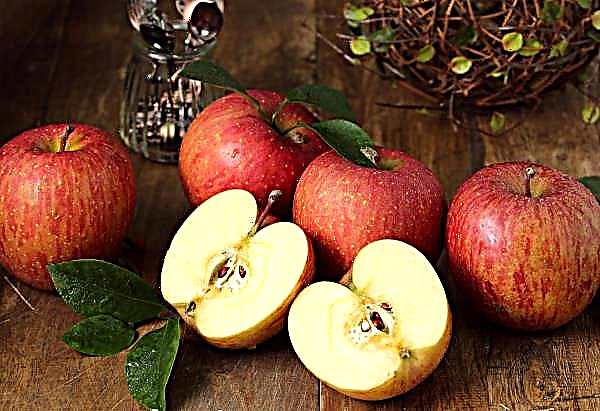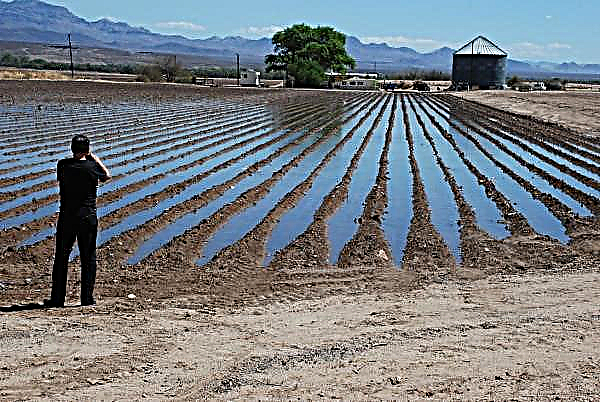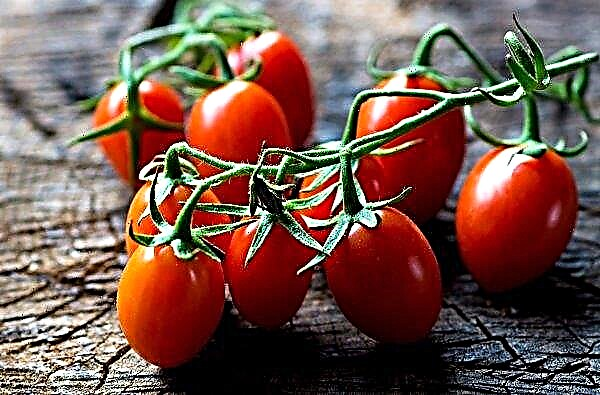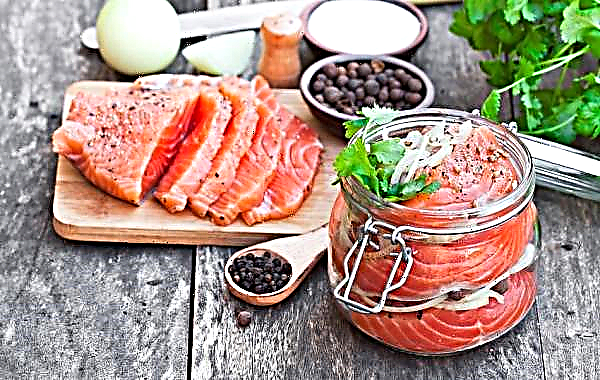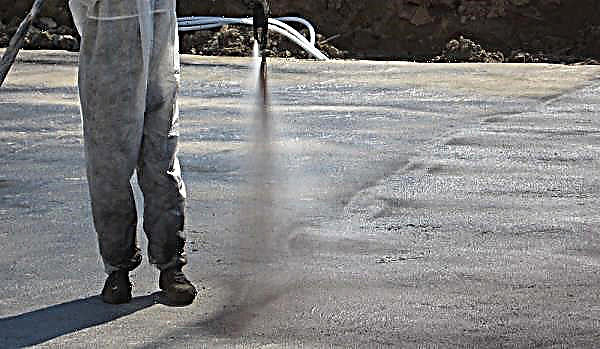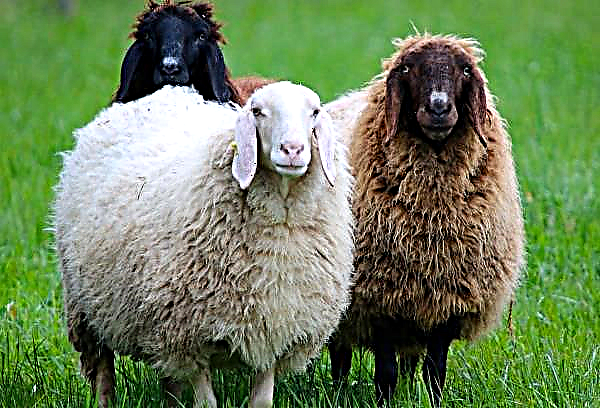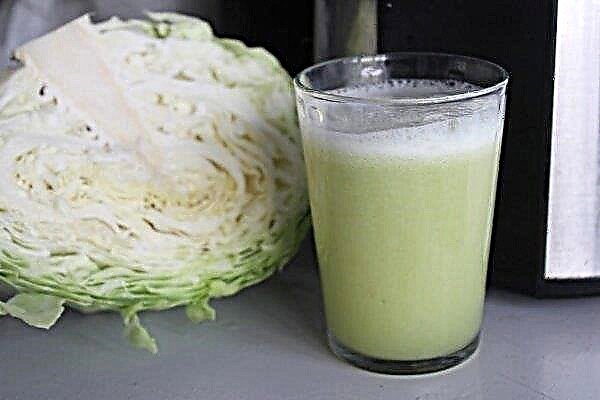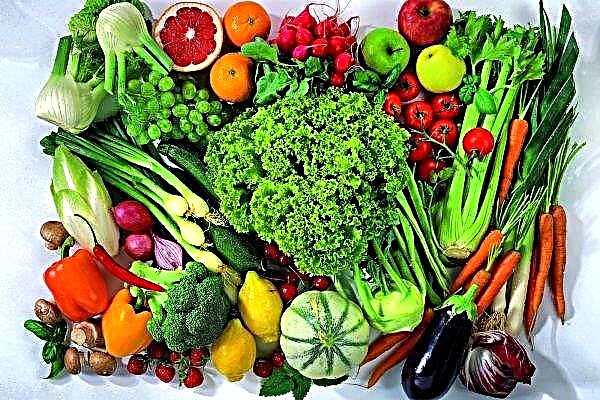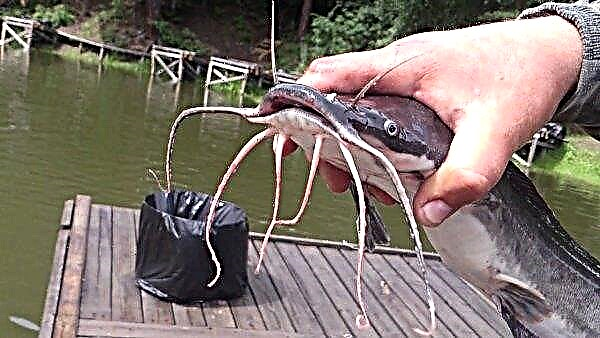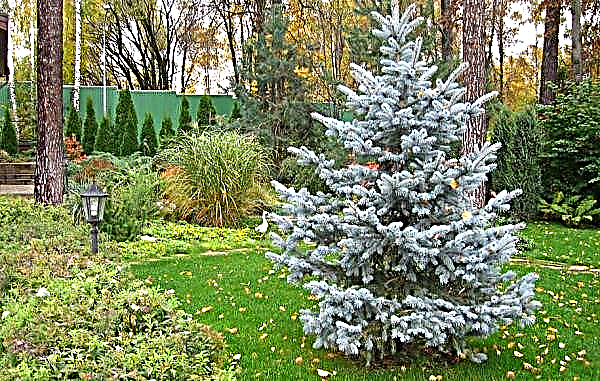Sauerkraut is a traditional appetizer in many countries of the world, there are many recipes for its preparation. Consider the best sauerkraut recipes as a preparation for the winter and the classic recipe in your own juice without sugar for eating dishes in a short time.
Selection and preparation of ingredients
The main ingredient of the dish is cabbage - and its quality directly affects the final result and the taste of the finished pickled product, therefore, when choosing a vegetable, you should approach the most responsible way. A late ripening vegetable, the weight of which is at least 1 kg with a sugar content of more than 4%, is ideally suited for fermentation - such fruits are very juicy and tasty. The shape of a quality vegetable suitable for pickling should be round with flattened poles. Pay attention to the color of the head: it should be snow-white, without green spots.

If you squeeze the heads of cabbage on both sides with your palms, you can hear a slight crunch, if there is no such sound, it is better not to buy such a vegetable. In addition, whole heads are suitable for fermentation, without mechanical damage. If a head of cabbage has cracks, punctures, cuts, most likely, it is already infected with fungal spores. After pickling such a vegetable, its shelf life will be minimal and soon the cabbage will become moldy. Be sure to taste the acquired vegetable, it should be sweet, without a hint of bitterness, then the finished pickled product should turn out to be very tasty.
Preparing the ingredients for the sourdough is done in advance so that when you get to work, you won’t be distracted by other processes. The upper leaves are removed from each head of cabbage, and the head is thoroughly washed. Large heads of cabbage should be cut into pieces, for convenience in the grinding process. Shredding vegetables is easiest on special shredders, the width of the strips should be at least 5 mm. Shredding a vegetable on shredder graters is most conveniently cut forward so that the leaves do not protrude in the opposite direction.
 If there is no chopping machine, you can cut the cabbage with a knife into thin strips or use large chopping graters
If there is no chopping machine, you can cut the cabbage with a knife into thin strips or use large chopping graters
As auxiliary ingredients in the process of sauerkraut are used: carrots, apples, cranberries, beets and all kinds of spices, the amount of which depends on the recipe. Before pickling, carrots and beets are also thoroughly washed and peeled, then cut into thin strips (up to 3 mm thick), ringleted or rubbed. The apples are thoroughly washed and cut into quarters or halves, removing the core. Cranberries are also washed before use.
Did you know? For the first time sauerkraut was prepared in China more than 2 thousand years ago, and the dish recipe came to Europe thanks to the Mongol-Tatars during the reign of Genghis Khan.
Winter Sugar Free Ferment Recipes
There are a lot of recipes for making sauerkraut for the winter, each differs in a set of ingredients and a method of preparation. Consider some of the best recipes for this dish.
Classic recipe in own juice

2572 hours
black pepper peas
10 pieces.
allspice peas
8 pcs
Nutritional value per 100 g:
 Thoroughly wash the prepared shredded cabbage with grated carrots so that it starts up its own juice. Do not add a lot of carrots to the dish, otherwise the cabbage will not crunch.
Thoroughly wash the prepared shredded cabbage with grated carrots so that it starts up its own juice. Do not add a lot of carrots to the dish, otherwise the cabbage will not crunch.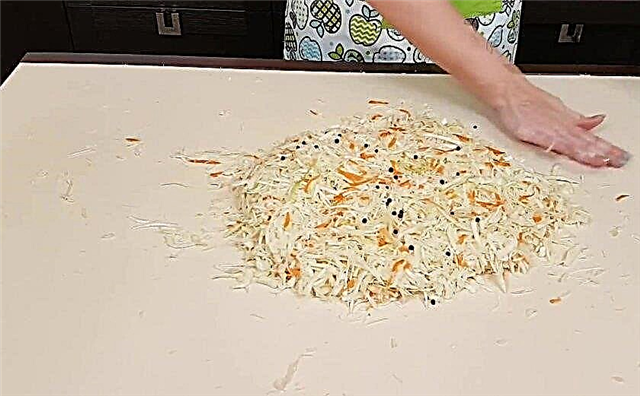 Add peppercorns to the main ingredient, mix thoroughly.
Add peppercorns to the main ingredient, mix thoroughly. Place the prepared mixture of vegetables and spices in 3 layers in a clean, dry 3-liter jar, placing 1 bay leaf between each layer.
Place the prepared mixture of vegetables and spices in 3 layers in a clean, dry 3-liter jar, placing 1 bay leaf between each layer. Place the jar in a deep container, since the cabbage in the process will secrete juice, which flows through the neck due to lack of free space.
Place the jar in a deep container, since the cabbage in the process will secrete juice, which flows through the neck due to lack of free space. After the jar is filled to the top, it is necessary to pierce the contents up to 5 times with a wooden stick. If you do not do this procedure, the dish will be bitter and unpleasant in taste. A day you need to walk at least 4 times with a stick through the contents of the can.
After the jar is filled to the top, it is necessary to pierce the contents up to 5 times with a wooden stick. If you do not do this procedure, the dish will be bitter and unpleasant in taste. A day you need to walk at least 4 times with a stick through the contents of the can.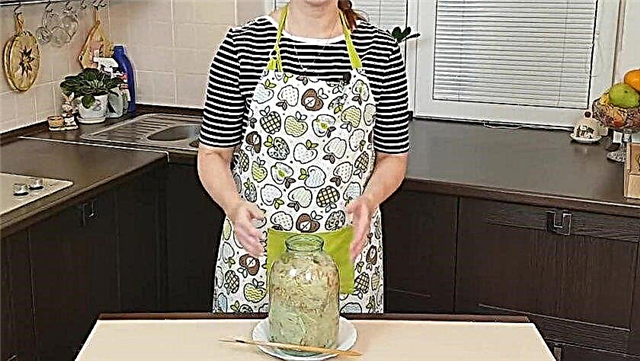 Place the container on a stable horizontal surface at room temperature and observe how the fermentation process goes. To prevent dust from entering the jar, you can cover the neck with gauze or bandage folded in several layers.
Place the container on a stable horizontal surface at room temperature and observe how the fermentation process goes. To prevent dust from entering the jar, you can cover the neck with gauze or bandage folded in several layers. 12 hours after the start of the fermentation process, the vegetable will secrete enough juice. If you need to add a little vegetable, pour salt directly into the jar and make a few punctures with a wooden stick, after 4 hours again try the juice to taste.
12 hours after the start of the fermentation process, the vegetable will secrete enough juice. If you need to add a little vegetable, pour salt directly into the jar and make a few punctures with a wooden stick, after 4 hours again try the juice to taste.
Sauerkraut can be consumed for 3 days of fermentation, but this period can be a little delayed if the air temperature in the room is too low. To determine the readiness of a product, periodically taste it. When you determine the full readiness of the dish - put the jar in the refrigerator or cellar.Important! Vinegar in the process of cooking sauerkraut is not recommended for use, so that all useful substances are preserved as much as possible.
Video recipe
With beets in brine without vinegar

30120 hours
Nutritional value per 100 g:
- Prepare a brine for the starter culture: boil 3 liters of water, gradually add salt and sugar, stirring thoroughly until completely dissolved.
- Remove the top leaves from a well-washed head of cabbage. Cut into 12 or 8 (depending on the size of the head) even parts of the stump so that all the parts keep their shape: cut the head in half, then divide each part in half again and so on until 12 or 8 parts are obtained. In order to make it convenient to cut a large head of cabbage, use the largest and sharpest knife that you have in the kitchen.
- Cut the washed beets into thin slices: the thinner you chop, the more juice it will give, and the main ingredient will be a bright raspberry color.
- Crush the garlic with a knife, laying the blade horizontally on each tooth, and press down with your palm, applying force.
- In a large pan with a volume of at least 10 l, lay all the ingredients in layers, following the sequence: beets, garlic, cabbage, bay leaves, black and allspice.
- Pour the brine into the container, press the contents of the pan with a plate and set the load, which will press the vegetable so that it is completely covered with brine. As a load, you can use a liter jar of water.
- After 5-7 hours, the jar can be removed, since the brine increases in quantity due to cabbage juice and completely covers the plate, therefore, additional oppression is not required.
- Sauerkraut should be in a warm room for about 5 days, daily crushing a plate to let out gas, which is formed inside the tank during fermentation.
- When 5 days have passed, it is necessary to taste the dish: if it is good, the container is placed in the cellar or refrigerator, covered with a lid.
Important! In order to ferment cabbage, cut into several parts, exclusively enameled or steel pans are used, since aluminum is oxidized, which gives the finished product an unpleasant aftertaste of metal.
Video recipe
Storage Features
The home-made finished product turns out to be very useful and tasty, but in order to preserve all these characteristics, it is imperative to follow the recommendations for its storage. That is why late autumn or winter - the most suitable time for the fermentation of vegetables, since it can be stored during this period for the longest time without loss of taste. The main condition for long-term storage of sauerkraut is a suitable temperature and properly selected containers. The longest storage is achieved when fermenting large volumes of cabbage in wooden barrels, which are installed in the cellars.
At air temperatures from –1 to + 4 ° С, the shelf life of the finished product reaches 8 months. Storage of the finished dish can also be carried out in an enameled bucket in the cellar. In winter, you can place the container on a glassed-in balcony, where the air temperature does not fall below 0 ° C and does not rise above + 7 ° C. If sauerkraut will be stored in glass jars, then the shelf life of the product will not exceed 2 weeks, while the air temperature is maintained at a level not higher than + 4 ° С.

Due to the short shelf life of the dish at home, it is usually not prepared for future use, and you can also prepare a fresh snack at any time. If it was not possible to consume all the cooked cabbage in a short time, it can be frozen and thawed in parts if necessary. To increase the shelf life of the snack, cranberries are added to it: up to 10 berries per 3-liter jar. If mold appears on the cabbage, it is removed along with the top layer of the product and 1 tbsp is poured. l mustard powder, which in this case acts as an antiseptic.
Did you know? Sauerkraut is used in many countries of the world, and in Germany this product is a national dish - Sauerkraut.
Thus, the classic recipe for making sauerkraut is as simple and fast as possible, even a novice culinary specialist can handle it. In order to preserve sauerkraut for a long time, you must clearly follow the recipe and take into account the storage features of the finished product.

 Thoroughly wash the prepared shredded cabbage with grated carrots so that it starts up its own juice. Do not add a lot of carrots to the dish, otherwise the cabbage will not crunch.
Thoroughly wash the prepared shredded cabbage with grated carrots so that it starts up its own juice. Do not add a lot of carrots to the dish, otherwise the cabbage will not crunch. Add peppercorns to the main ingredient, mix thoroughly.
Add peppercorns to the main ingredient, mix thoroughly. Place the prepared mixture of vegetables and spices in 3 layers in a clean, dry 3-liter jar, placing 1 bay leaf between each layer.
Place the prepared mixture of vegetables and spices in 3 layers in a clean, dry 3-liter jar, placing 1 bay leaf between each layer. Place the jar in a deep container, since the cabbage in the process will secrete juice, which flows through the neck due to lack of free space.
Place the jar in a deep container, since the cabbage in the process will secrete juice, which flows through the neck due to lack of free space. After the jar is filled to the top, it is necessary to pierce the contents up to 5 times with a wooden stick. If you do not do this procedure, the dish will be bitter and unpleasant in taste. A day you need to walk at least 4 times with a stick through the contents of the can.
After the jar is filled to the top, it is necessary to pierce the contents up to 5 times with a wooden stick. If you do not do this procedure, the dish will be bitter and unpleasant in taste. A day you need to walk at least 4 times with a stick through the contents of the can. Place the container on a stable horizontal surface at room temperature and observe how the fermentation process goes. To prevent dust from entering the jar, you can cover the neck with gauze or bandage folded in several layers.
Place the container on a stable horizontal surface at room temperature and observe how the fermentation process goes. To prevent dust from entering the jar, you can cover the neck with gauze or bandage folded in several layers. 12 hours after the start of the fermentation process, the vegetable will secrete enough juice. If you need to add a little vegetable, pour salt directly into the jar and make a few punctures with a wooden stick, after 4 hours again try the juice to taste.
12 hours after the start of the fermentation process, the vegetable will secrete enough juice. If you need to add a little vegetable, pour salt directly into the jar and make a few punctures with a wooden stick, after 4 hours again try the juice to taste.